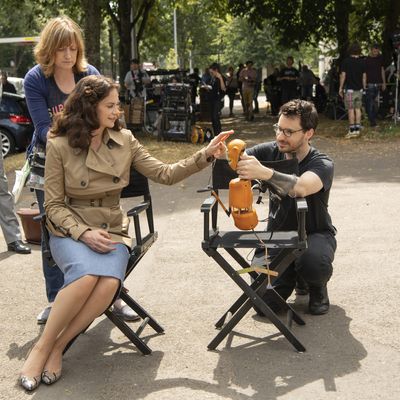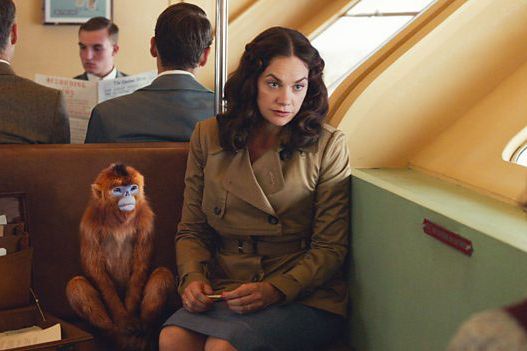
The most visually distinctive thing about the world where His Dark Materials begins is that people wander around with soul-like, animal-shaped beings called daemons. As deployed in the book series, by Philip Pullman, the daemons are a useful literary device since they can converse with the humans they’re connected to. Pullman could have his hero, Lyra, engage in conversations with her demon, Pantalaimon, who changes form into various animals because she’s still young. (Also, having a daemon just sounds fun.) But filming a version of the Dark Materials books means figuring out a way not only to animate all those daemons but to make it look as if they have actual, complicated relationships with the characters they’re linked to. For HBO, this is where puppets come in.
“From the very beginning, we knew we wanted to use puppets on set,” Brian Fisher, the series’ lead puppeteer and CFX coordinator, told Vulture. First, using puppet stand-ins for the daemons provides the actors with a way to know the size, scale, and location of whatever creature they’re supposed be talking to in any given scene. But also, as Fisher pointed out, the humans have to be “able to form an emotional attachment to these other parts of themselves, these inner faults, the soul side of them.” The daemons as Pullman describes them are both part of a person and a separate conscious entity, so the actors need to have a relationship with them that’s as well defined as their relationships to other people.
On set, the daemon puppets were generally built with the basic structure of a head on a stick, which is often used to provide an eyeline for an actor to a creature in scenes involving special effects. “We added a sculpted head onto those so that you were still getting character from them,” Fisher explained, “and then your next step up from that is a slinky body style of puppet for most of the quadrupedal or bipedal animals.” For bird daemons, the Dark Materials team used a “flappy version” for flight as well as a mechanical puppet that could land on people’s arms or on other locations. For moments when daemons transition between animal forms, the puppeteers worked out ways to “be clever about having one puppet come here and then jump through something and come out as a different puppet,” allowing more freedom for the effects team to animate a transformation.
“The simple design we’ve come up with lends itself to imagination,” Fisher said. “You’re able to see these puppets and put your own emotions onto them, and that’s exactly what we wanted to do because we want it to be like a mirror for the actors. They can look at this daemon and see other things that are happening within themselves.”
Fisher, who had previously worked on the puppetry for Detective Pikachu, said different actors need more or less puppetry work depending on how they approach their performances, but he had a particularly close working relationship with Ruth Wilson. Wilson plays the beautiful Marisa Coulter, whose daemon is a mysterious, sinister golden monkey that never speaks or gets a name. (Fisher’s team settled on making the species specifically a snub-nose monkey in the show.) Despite that, Wilson wanted to develop a full and specific dynamic between Coulter and the monkey, and she worked closely with Fisher to build one. “She very much accepted it with open arms and just said, ‘If we’re going to do this, we have to do this together. Speak to me about ideas that you’re having for the monkey,’” Fisher said.
(Note: Light spoilers ahead for non–book readers.)
Coulter and the monkey often present as polite in public while acting brutally toward Lyra and others in private; the golden monkey also has the ability to travel farther from Coutler’s body than most other daemons and sometimes seems at odds with her intentions. “Obviously, they have a very sordid relationship, a very dark relationship, I would say, within themselves,” Fisher said. “So it’s interesting to have a situation that comes up in the story where there is a divide between them, and how they dance on that line between needing to be within a united front.”
While working with Wilson on set, Fisher also started making animal noises for the monkey. And “because everyone had gotten used to hearing these monkey screams I’d been doing,” and because Fisher and Wilson had timed everything so specifically, down to developing an interplay between their breaths — “if she hears me speeding up my breath, she might consciously take a deep breath to calm herself down, which then calms the monkey down” — they decided to use Fisher’s voice for the monkey’s sounds in the film as well. “They are now building that into all those other incredible sounds of their own engineering to build this monkey and flesh him out,” Fisher said. “I don’t even know what I would do if they gave me a word. I don’t know what I would do — it just feels so foreign. Monkey doesn’t speak.”






